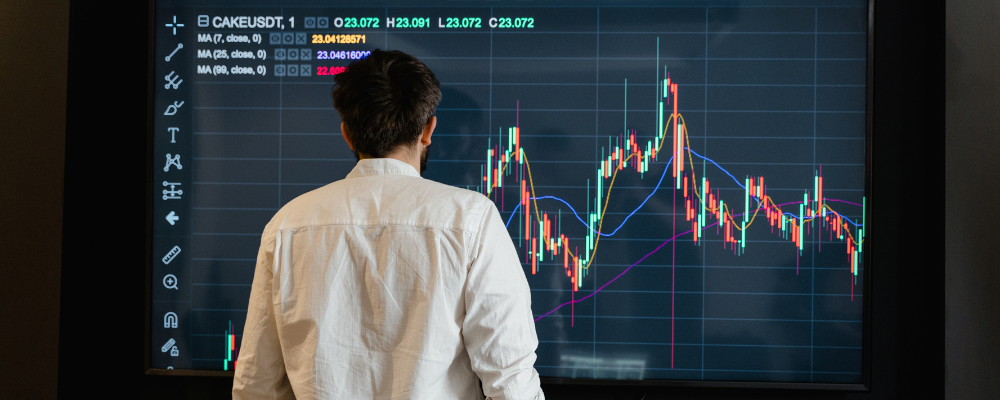How rollover costs work in CFDs and the best low-fee brokers

Contracts for Difference (CFDs) are popular financial instruments that allow traders to speculate on price movements without owning the underlying asset. While CFDs offer advantages like leverage and short-selling opportunities, they also come with unique costs, one of which is the rollover fee (also known as a swap fee).
Understanding rollover costs is crucial for traders, especially those holding positions overnight. In this article, we’ll break down how rollover fees work, how they’re calculated, and strategies to minimize their impact.
What are rollover costs in CFD trading?

Rollover costs are interest fees applied to positions held open overnight in CFD trading. Since CFDs are leveraged products, brokers charge or credit traders for keeping positions open beyond the trading day.
Why do rollover fees exist?
- CFDs are derivative instruments, meaning traders don’t own the underlying asset.
- When you trade with leverage, you’re essentially borrowing money from the broker.
- The rollover fee compensates for the cost of holding the position overnight.
How are rollover costs calculated?

Rollover fees depend on:
- The instrument traded (Forex, indices, commodities, Cryptocurrencies)
- The direction of the trade (Long or Short)
- The broker’s swap rates (Each broker sets its own rates)
The formula for rollover fees
Daily rollover fee = position size × annual interest rate difference ÷ 360 or 365
(Note: Some brokers use 360-day or 365-day year depending on the instrument)
Forex CFD (e.g. EUR/USD) example
Rollover = interest rate of base currency – interest rate of quote currency
If you’re long EUR/USD, you’re buying EUR and selling USD.
If the USD rate is higher, you pay the difference = negative rollover.
📌 Example:
- EUR interest rate = 4.0%
- USD interest rate = 5.0%
- Difference = –1.0%
- Position: $10,000
- Daily Cost ≈ $10,000 × (–1.0%) ÷ 365 ≈ –$0.27
Examples of rollover costs in different markets

1. Forex market (EUR/USD)
- Rollover basis: Interest rate differential between the two currencies.
- Why: Holding positions overnight results in a swap (positive or negative) based on central bank rates.
- Example:
- Position: Long EUR/USD
- Yearly rate: –0.8% (USD rate > EUR rate)
- Position size: $10,000
- Daily cost: ≈ $0.22
2. Commodity market (Gold – XAU/USD)
- Rollover basis: Financing cost for holding a non-yielding asset.
- Why: No interest or dividends, so brokers charge based on interbank rates (like SOFR) + markup.
- Example:
- Position: Long Gold CFD
- Yearly rate: 5.8%
- Position size: $10,000
- Daily cost: ≈ $1.59
3. Stock market (Tesla CFD)
- Rollover basis: Margin cost, similar to borrowing funds to hold the position.
- Why: CFDs are leveraged products, and brokers charge interest on borrowed capital.
- Example:
- Position: Long Tesla CFD
- Yearly rate: 7.3% (e.g. SOFR + 2%)
- Position size: $5,000
- Daily cost: ≈ $1.00
4. Crypto market (Bitcoin CFD)
- Rollover basis: Crypto funding rates (can be positive or negative).
- Why: Reflects volatility and leverage costs in crypto markets.
- Example:
- Position: Long BTC/USD CFD
- Yearly rate: 5%
- Position size: $20,000
- Daily cost: ≈ $2.74
5. Short positions (e.g. S&P 500 CFD)
- Rollover basis: You may earn interest for short positions depending on market rates and broker policy.
- Example:
- Position: Short S&P 500 CFD
- Yearly rate earned: 3.8%
- Position size: $15,000
- Daily gain: ≈ $1.56
How to reduce rollover costs

- Trade during the same day (avoid overnight fees) – Close positions before the broker’s rollover time (usually 5 PM EST).
- Look for brokers with lower swap rates – Some brokers offer competitive or even swap-free accounts.
- Trade in the direction of positive swaps – For example, buying high-yield currencies against low-yield ones.
- Use Islamic accounts (swap-free) – Some brokers offer accounts compliant with Sharia law, where swaps are replaced with fixed fees.
Best FX brokers with low rollover costs
If you’re looking for brokers with competitive rollover rates and strong trading conditions, consider these top-rated platforms:
XM Group (best true swap-free accounts)
- 🌎 Regulation: ASIC, CySEC, IFSC
- 💵 Min. deposit: $5
- 📉 Swap fees: Low markups (e.g., Gold swap = 4.5% yearly vs. industry 6%).
- ✨ Why pick it?
- True Islamic accounts (no hidden spread adjustments).
- No requotes, fast execution.
- Ideal for muslim traders and beginners.
OANDA (best for US traders and hedging)
- 🌎 Regulation: CFTC/NFA (US), FCA, ASIC
- 💵 Min. deposit: $0
- 📉 Swap fees: Transparent (e.g., USD/JPY = 0.15% yearly).
- ✨ Why pick it?
- US-regulated with reliable pricing.
- No swap markups, great for long-term traders.
Exness (best for swap-free status)
- 🌎 Regulation: FCA, CySEC, FSCA
- 💵 Min. deposit: $10
- 📉 Swap fees: All account types may have the swap-free status.
- ✨ Why pick it?
- Instant withdrawals + free VPS for algo trading.
- Best for short-term traders capitalizing on promos.
HF Markets (HFM) (best for low swaps + raw spreads)
- 🌎 Regulation: CySEC, FCA, DFSA
- 💵 Min. deposit: $5
- 📉 Swap fees: Competitive (EUR/USD = 0.4% yearly).
- ✨ Why pick it?
- ECN accounts with tight spreads.
- Swap-free options + MetaTrader 5 support.
AvaTrade (best for fixed swaps and beginners)
- 🌎 Regulation: ASIC, FSCA, CySEC
- 💵 Min. deposit: $100
- 📉 Swap fees: Fixed rates (e.g., EUR/USD = 0.6% yearly).
- ✨ Why pick it?
- Predictable swap costs (no surprises).
- User-friendly for new traders.
Related articles:
CFD rollover costs - FAQ